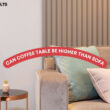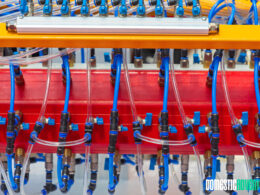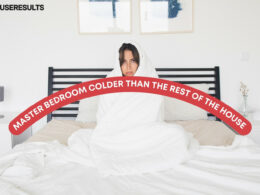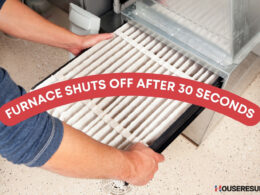Table of Contents Show
Hello there! If you’ve ever ventured into the world of tile installations, whether for a bathroom, kitchen, or patio, you’ll agree that the foundation is everything.
I’ve been in the homeowner’s shoes, and I’ve also donned the contractor’s hat on numerous occasions, working on projects big and small. One of the most crucial decisions in any tile job is choosing the right backer board. This brings us to the ongoing debate: Wonderboard vs. Durock – which is better?
Over the years, and with many satisfied clients later, I’ve had hands-on experience with both products. And I’ve learned that each has its strengths and unique features. This article aims to shed light on this topic, making it simpler for you, whether you’re a fellow contractor or a homeowner planning your next DIY project.
Let’s embark on this journey of understanding, shall we? By the end, I hope to equip you with the insights you need to make the best choice for your specific project.
Quick Answer
The main difference between Wonderboard and Durock lies in their composition and intended applications. While both are cement backer boards designed to provide a stable substrate for tile installations, Wonderboard offers exceptional durability, making it ideal for high-traffic areas and wet zones like bathrooms. On the other hand, Durock boasts superior strength and lighter weight, frequently chosen for vertical installations and projects requiring added rigidity. When selecting between the two, consider factors like location, moisture exposure, and desired finish to make an informed choice. Both products have earned their reputation in the construction industry, promising longevity and performance.
Advantages of Wonderboard
One of the primary considerations when picking a backer board for any tile installation is its longevity and resistance to external elements, especially in moisture-prone areas like bathrooms and kitchens. Wonderboard, in this respect, has garnered significant attention.
Durability and LifespanWonderboard is renowned for its sturdiness. It’s built to last, ensuring that tiles remain in place for years without the fear of degrading or losing their appeal. This makes it a preferred choice for areas that experience high foot traffic or frequent usage.
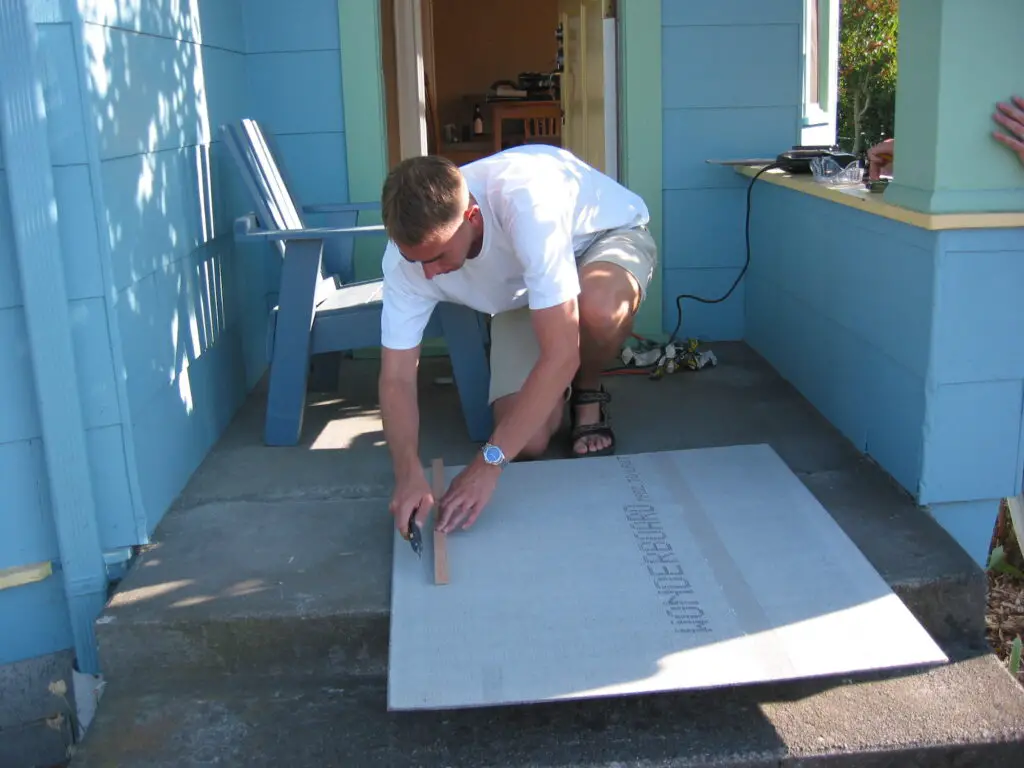
1. Water and Moisture Resistance
Tiles, by their nature, are often exposed to water and moisture, especially in areas like bathrooms, kitchens, and even outdoor patios.
According to a study published in the SpringerOpen Journal on Building and Environment, cement-based backer boards, like Wonderboard, display exceptional resistance to water absorption. This inherent quality minimizes the risk of mold, mildew, and structural damage, ensuring a longer-lasting and healthier living environment.
2. Versatility in Different Applications
Beyond just bathrooms and kitchens, Wonderboard can be used in various settings. Whether it’s for a fireplace surround, an outdoor grill station, or even a custom-built shower bench, its adaptability shines through. Its compatibility with diverse tile materials – from porcelain to stone – underscores its versatility.
3. Ease of Installation for Professionals and DIYers
There’s beauty in simplicity. For both seasoned professionals and enthusiastic DIY homeowners, Wonder Board’s design makes the installation process straightforward. Its surface offers a strong bond for tiles, reducing the likelihood of tiles shifting or popping off. Plus, with the right tools and a bit of guidance, even a newbie can achieve a professional finish.
Advantages of Durock
As we shift our focus to Durock, it’s essential to recognize that this product has carved a niche for itself in the tiling industry. Its reputation precedes it, not just because of its name, but also due to the tangible benefits it offers to both contractors and homeowners.
1. Superior Strength and Rigidity
Durock stands out for its unparalleled structural strength. This attribute is not just anecdotal; according to a report from the International Journal of Civil Engineering and Technology, cement boards that maintain a consistent density, like Durock, tend to exhibit superior rigidity.
This ensures that the tiles have a firm, unyielding foundation, reducing the chances of cracking or dislodgement over time.
2. Lighter Weight Compared to Some Competitors
While strength is a critical factor, so is manageability. Durock has managed to strike a balance between offering robust support and being relatively lightweight. This makes handling, transporting, and installing the boards more efficient and less labor-intensive, especially for solo projects.
3. Proven Track Record in the Industry
Durock isn’t a new player on the block. It’s been around, serving the construction and remodeling industry faithfully. Over the years, many professionals, including myself, have come to trust its consistent quality and performance, making it a go-to option for various projects.
4. Compatibility with Various Finishes and Settings
One of Durock’s strengths lies in its adaptability. Whether you’re working with ceramic tiles in a bathroom, natural stone in an entryway, or even mosaics on a feature wall, Durock can handle it. Its surface bonds effectively with different tile adhesives and grouts, ensuring a seamless and enduring finish regardless of the chosen setting.
Potential Drawbacks
Every product, no matter how celebrated, has its challenges. Through both my homeowner and contractor lenses, I’ve witnessed the ups and downs of using various backer boards. Let’s shed some light on the potential drawbacks of both Wonderboard and Durock.
Wonderboard: Possible Issues or Challenges
- Weight: One of the noticeable challenges with Wonderboard is its weight. It’s notably heavier than some other backer boards, making it a bit more challenging to handle, especially for solo DIYers.
- Cutting Difficulty: Cutting Wonderboard requires a bit more elbow grease. The board’s density, while great for durability, can make it somewhat resistant to scoring and snapping cleanly.
- Dust Generation: When cutting Wonderboard, there’s often a significant amount of dust generated. This not only requires adequate safety measures, like wearing masks but also makes the work area messier.
- Cost: While it offers excellent durability, Wonderboard can sometimes come at a higher price point than some of its competitors.
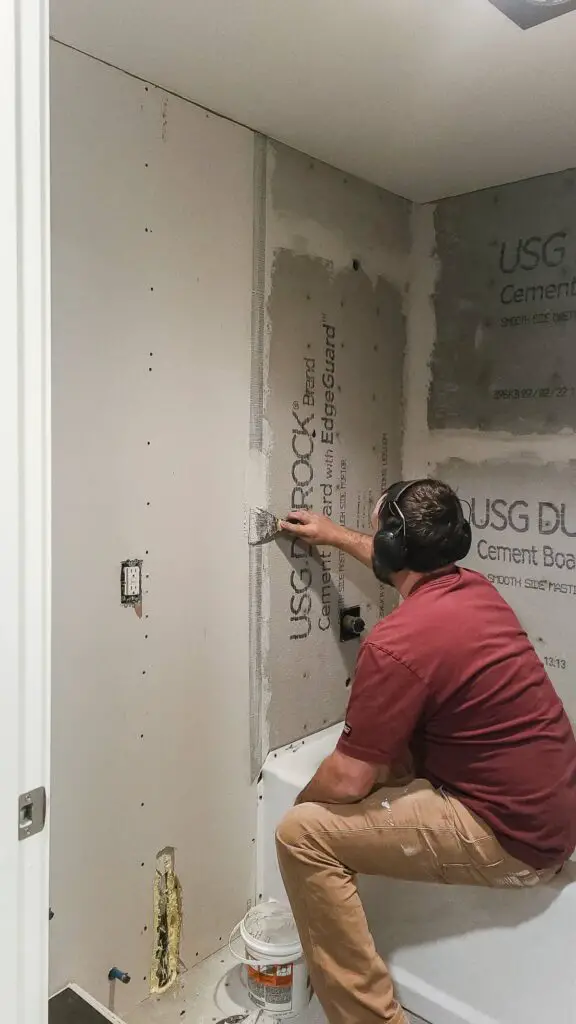
Durock: Any Common Complaints or Pitfalls
- Edge Crumbling: Some users have reported that Durock’s edges can be a bit crumbly, especially when cut. This requires extra care during installation to avoid unwanted gaps or misalignments.
- Surface Texture: Durock’s surface, while excellent for bonding, can be a bit rough. This might pose challenges when trying to achieve an ultra-smooth finish, especially in decorative settings.
- Screws and Fastening: Durock often requires specific screws or fasteners for optimal installation. Using the wrong type can compromise the board’s integrity and longevity.
- Moisture Barrier Requirement: For areas with high moisture exposure, Durock typically requires an additional moisture barrier behind it.
While these drawbacks exist, it’s essential to weigh them against each product’s advantages. Understanding these challenges can help in making an informed decision and planning the installation process more effectively.
Cost Comparisons
One of the significant considerations for any homeowner or contractor is cost. The backer board you choose, while essential for the project’s quality, also has to fit within your budget. Let’s break down the cost elements for both Wonderboard and Durock to give you a clearer picture.
Average Prices for Both Products
- Wonderboard: The price can vary based on region and retailer, but as of my last check, you can expect to pay anywhere from $10 to $15 for a 3′ x 5′ sheet of Wonderboard. Larger boards or specialty thicknesses might come at a higher cost.
- Durock: Durock’s pricing is somewhat comparable. A standard 3′ x 5′ sheet often falls in the $10 to $20 range. Again, prices can fluctuate based on the board’s size, thickness, and regional factors.
It’s essential to keep in mind that prices can vary widely based on local market conditions, ongoing promotions, and specific retailer pricing strategies.
Factors That Can Influence the Total Cost of Installation
1. Board Thickness
Both Wonderboard and Durock come in various thicknesses. Generally, the thicker the board, the higher the price. Your project might require a specific thickness, which can affect your overall expenditure.
2. Square Footage
The size of your project is a no-brainer. Larger areas will require more boards, thus increasing the total material cost.
3. Additional Materials
Don’t forget about the extras – screws or fasteners, adhesives, sealants, and possibly a moisture barrier (especially for Durock in wet areas). These can add up.
4. Labor Costs
If you’re hiring a professional for the installation, labor costs will play a significant role. The complexity of the job, regional labor rates, and the professional’s expertise can all influence this cost.
5. Waste and Overages
Always account for waste. It’s standard practice to order an additional 10-15% more material than your actual measurements to account for cuts, breaks, and potential mistakes.
6. Transportation
If you’re sourcing the boards from a distant supplier or a retailer that doesn’t offer free delivery, transportation costs can add to your overall budget.
In conclusion, while the base price for Wonderboard and Durock may seem straightforward, various factors can influence the final cost of your project. It’s always wise to map out all these potential expenditures to get an accurate budgetary estimate.
Application Recommendations
Ensuring the longevity and aesthetic appeal of your tiling project largely depends on the correct application of your chosen backer board. Over my years in the industry, I’ve seen how certain scenarios can be more favorable for one product over another.
Here are my insights on where and when to use Wonderboard and Durock, and some handy tips to get the most out of them.
Best Use Cases for Wonderboard
- High-Traffic Areas: Given its impressive durability, Wonderboard excels in areas with a lot of foot traffic. Think hallways, main living areas, and commercial spaces.
- Wet and Moisture-Prone Zones: With its excellent water and moisture resistance, Wonderboard is a top choice for bathrooms, especially shower areas, and around bathtubs.
- Outdoor Applications: Whether it’s an outdoor kitchen or a patio, Wonderboard’s robust nature makes it suitable for exterior applications where it might be exposed to the elements.
- Fireplace Surrounds: Given its heat resistance, Wonderboard works well for fireplace surrounds, providing a stable and safe backing for tiles.
Tips For Wonderboard
- Always ensure that the board is securely fastened to the substrate. This will prevent any movement that might damage the tiles.
- For wet areas, while Wonderboard resists moisture, using a waterproof membrane over it can provide an additional layer of protection.
Ideal Scenarios for Durock
- Vertical Installations: Due to its lightweight nature and rigidity, Durock is an excellent choice for vertical installations like walls.
- Floors Needing Extra Rigidity: In areas where the floor might be a bit unstable or where extra rigidity is required, Durock serves as a reliable foundation.
- Decorative Features: For features like accent walls or backsplashes, where a smoother finish might be desired, Durock can be a good choice given its compatibility with various finishes.
- Steam Rooms and Saunas: Durock’s ability to withstand prolonged moisture exposure makes it ideal for steam rooms and saunas.
Tips for Durock
- Ensure that the edges of Durock are adequately supported, especially during the cutting process, to prevent crumbling.
- While Durock offers a good bond, it’s essential to use the right adhesive for the specific tile type to ensure longevity.
Frequently Asked Questions
Navigating the world of backer boards can sometimes throw up more questions than answers. Here are some commonly asked queries about Wonderboard and Durock, paired with concise and clear responses to guide your decision-making.
Can I use Wonderboard or Durock as a substrate for other types of flooring, like vinyl or laminate?
Both Wonderboard and Durock are designed primarily for tile installations. While they provide a stable substrate, they might not be suitable for vinyl or laminate flooring. Always refer to the flooring manufacturer’s recommendations for the appropriate substrate.
How do I cut Wonderboard and Durock?
Both boards can be scored using a carbide-tipped scoring tool and then snapped along the scored line. For more intricate cuts, a jigsaw or circular saw with a carbide blade can be used. Remember to wear safety gear, as cutting can produce dust.
Do I need to waterproof the Wonderboard or Durock before tiling in wet areas?
While both boards are moisture-resistant, in areas with direct water exposure, such as showers, it’s a good idea to apply a waterproof membrane over the board for added protection.
Are there any specific screws or fasteners I should use with these boards?
Yes, both Wonderboard and Durock have recommended screws or fasteners. Typically, corrosion-resistant screws designed for backer boards are recommended. Always follow the manufacturer’s guidelines.
Can I install radiant heating systems under tiles with Wonderboard or Durock as the backer board?
Yes, both Wonderboard and Durock can be used with radiant heating systems. They provide a stable and heat-resistant base for such installations. Ensure you follow the guidelines of the radiant heating system manufacturer.
Is there a difference in the warranty between Wonderboard and Durock?
Both products generally come with warranties, but the specifics might vary. It’s always best to check with the respective manufacturer or supplier for detailed warranty information.
Do these boards prevent mold and mildew growth?
Wonderboard and Durock are both resistant to mold and mildew due to their cementitious nature. However, it’s always a good practice to ensure proper ventilation and moisture management in wet areas to further deter mold growth.
Remember, every project is unique. While these recommendations provide a guideline based on general properties and uses, considering the specific needs and conditions of your project will ensure success. Always test and assess before full-scale application








